
Graffiti art has long been a means of expression in urban environments, allowing artists to transform blank walls into vibrant masterpieces. This unique form of street art has come a long way since its humble beginnings, evolving into a recognized art form that captivates and inspires. In this article, we will explore some of the coolest examples of graffiti art that showcase the immense creativity found in the urban landscape.
With its bold colors, intricate details, and powerful messages, graffiti art has the ability to transcend boundaries and connect with people from all walks of life. From massive murals that cover entire buildings to small, hidden gems tucked away in alleyways, these works of art spark conversations and challenge societal norms.
One of the most fascinating aspects of graffiti art is the way it blends into its surroundings, seamlessly becoming a part of the urban fabric. Artists carefully select their locations, considering the existing environment and using it as a canvas for their creativity. The result is a harmonious fusion of art and the cityscape, creating a visual feast for the eyes.
Whether it’s a thought-provoking political statement or a whimsical scene that brings a smile to your face, graffiti art has the power to evoke emotions and make a lasting impression. It challenges us to see the world through a different lens, encouraging us to question societal norms and embrace the beauty that can be found in unexpected places.
Graffiti art has a long and fascinating history, with roots that can be traced back to ancient civilizations. While often associated with urban streets and rebellious youth culture, the art form has evolved and gained recognition as a legitimate art movement.
Ancient Origins
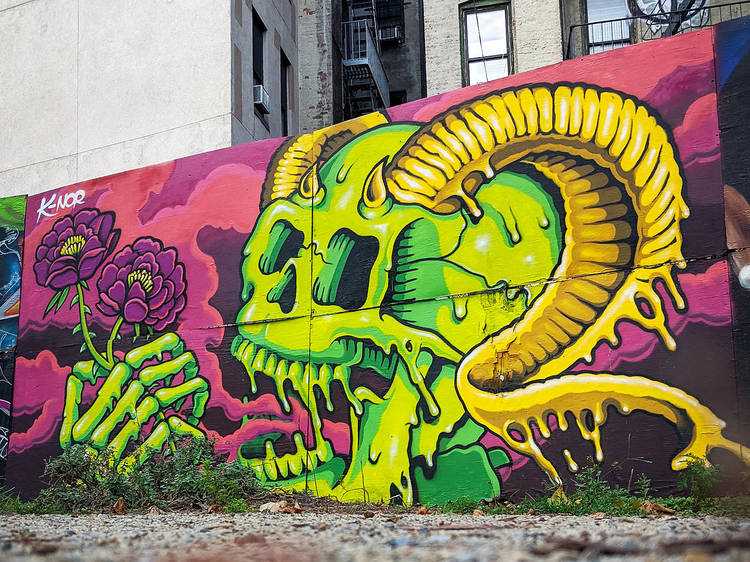
The origins of graffiti art can be seen in the ancient ruins of civilizations such as Ancient Egypt, Ancient Greece, and the Roman Empire. These cultures used graffiti as a form of communication, with messages and images scrawled on walls and buildings.
Modern Beginnings
Graffiti as we know it today began to emerge in the mid-20th century, particularly in cities like New York and Philadelphia. It was during this time that graffiti began to be associated with urban unrest and social issues.
The rise of hip-hop culture in the 1970s and 1980s played a significant role in the popularization of graffiti art. Graffiti became a means of self-expression for marginalized communities, with artists using spray paint and markers to create large-scale murals and tags.
| Decade | Milestones |
|---|---|
| 1960s | Introduction of spray paint cans |
| 1970s | Rise of hip-hop culture and graffiti art |
| 1980s | Graffiti art gains recognition as a legitimate art form |
| 1990s | Global spread of graffiti art |
Graffiti artists such as Jean-Michel Basquiat and Keith Haring emerged during this time, using graffiti techniques in their works and bridging the gap between street art and the art world.
Today, graffiti art has become an integral part of urban landscapes worldwide. It continues to push boundaries, challenge societal norms, and serve as a platform for artists to express themselves.
Famous Graffiti Artists
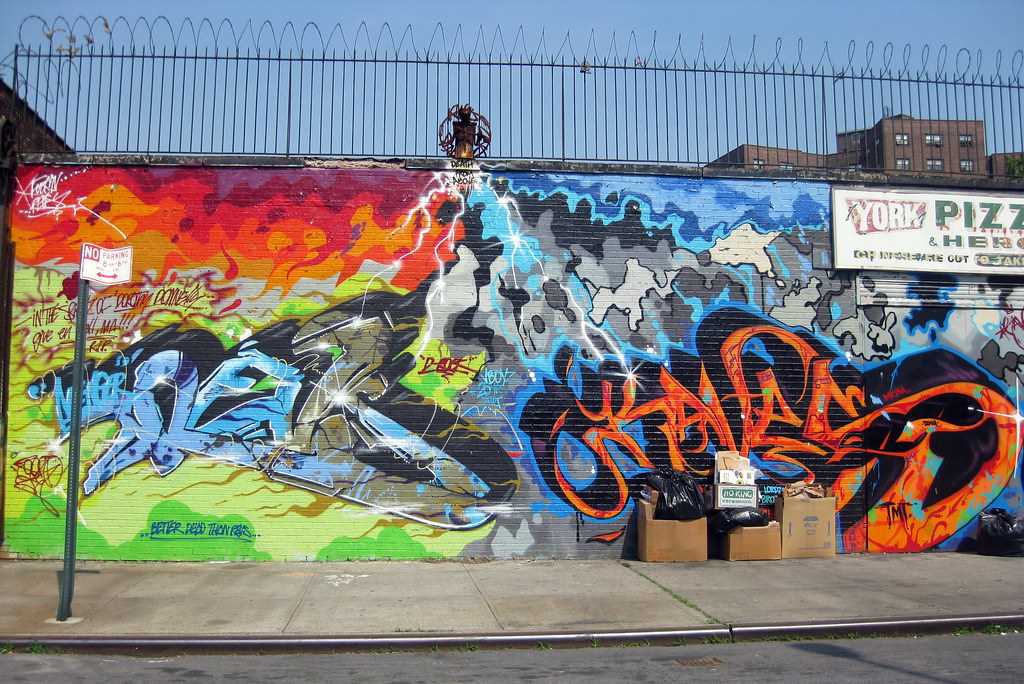
Graffiti artists have been making their mark on cities around the world for decades. Here are some of the most famous graffiti artists who have made a significant impact on the urban art scene:
| Banksy
Banksy is perhaps the most well-known graffiti artist in the world. His politically charged and satirical artworks can be found on walls and bridges in cities such as London, New York, and Paris. Banksy’s identity remains a mystery, but his art continues to spark conversations and inspire other artists. |
Shepard Fairey |
| Jean-Michel Basquiat
Basquiat started as a graffiti artist in New York City before transitioning to the world of fine art. His vibrant and expressive paintings explore themes of race, identity, and social commentary, making him one of the most celebrated artists of the 20th century. |
Futura |
| Lady Pink
Lady Pink, born Sandra Fabara, is a graffiti artist and muralist known for her vibrant and detailed artworks. As one of the few female artists in the male-dominated graffiti scene, Lady Pink has made significant contributions to the art form and has inspired a new generation of female artists. |
Keith Haring
Keith Haring’s bold and energetic graffiti-style artworks became synonymous with the 1980s New York street art scene. His iconic figures and vibrant colors were a reflection of the vibrant culture of the city and his activism for AIDS awareness and LGBTQ+ rights. |
These are just a few of the many talented graffiti artists who have left their mark on the urban landscape. Their work continues to inspire and challenge traditional ideas of art and public space.
Different Styles and Techniques of Graffiti
Graffiti is a diverse form of art that allows artists to showcase their creativity and skills in various styles and techniques. From bold and vibrant colors to intricate designs and lettering, graffiti has evolved into a powerful visual medium for self-expression. Here are some of the different styles and techniques commonly used in graffiti art:
1. Wildstyle
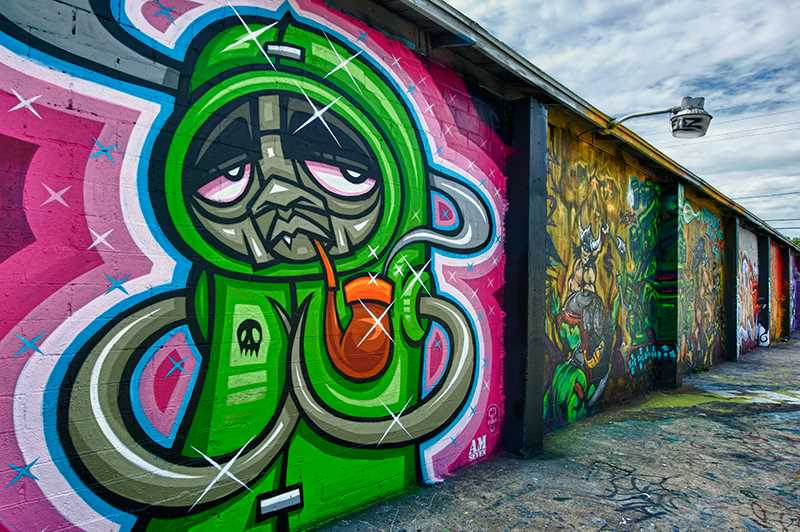
Wildstyle is a complex and highly intricate style of graffiti characterized by its interlocking letters and abstract shapes. Artists often use arrows, adding even more complexity to the overall design. This style requires a high level of skill and precision to create legible letters while also maintaining a visually stimulating composition.
2. Stencil
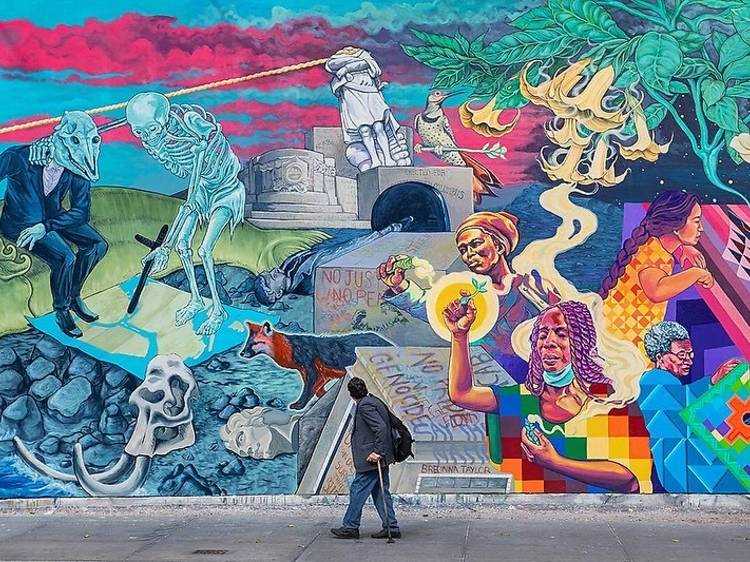
Stencil graffiti involves creating a design by cutting out a stencil and then using spray paint or another medium to apply the design onto a surface. Stencil graffiti allows for more detailed and intricate designs, as artists can create multiple layers and masks to achieve different colors and textures.
While stencils are often used for political or social messages, artists also use this technique to add depth and dimension to their graffiti art.
3. 3D Graffiti
3D graffiti creates the illusion of depth and three-dimensionality through shading and perspective techniques. By playing with light and shadows, artists can make their graffiti artwork appear to pop off the surface. This style often incorporates bold colors and exaggerated proportions to enhance the three-dimensional effect.
3D graffiti requires a keen understanding of spatial relationships and a skillful use of shadows and highlights. It adds an extra layer of realism and visual impact to the artwork.
These are just a few examples of the many styles and techniques used in graffiti art. From tags and throw-ups to murals and street art, the world of graffiti offers endless possibilities for artists to express themselves and leave their mark on the urban landscape.
No matter the style or technique, graffiti artists continue to push boundaries and challenge traditional notions of art. Their bold and vibrant creations are a testament to the power of urban creativity and the impact it can have on society.
Impact of Graffiti on Urban Culture
Graffiti has had a profound impact on urban culture around the world. It has become a powerful tool for expression, activism, and community building.
Artistic Expression
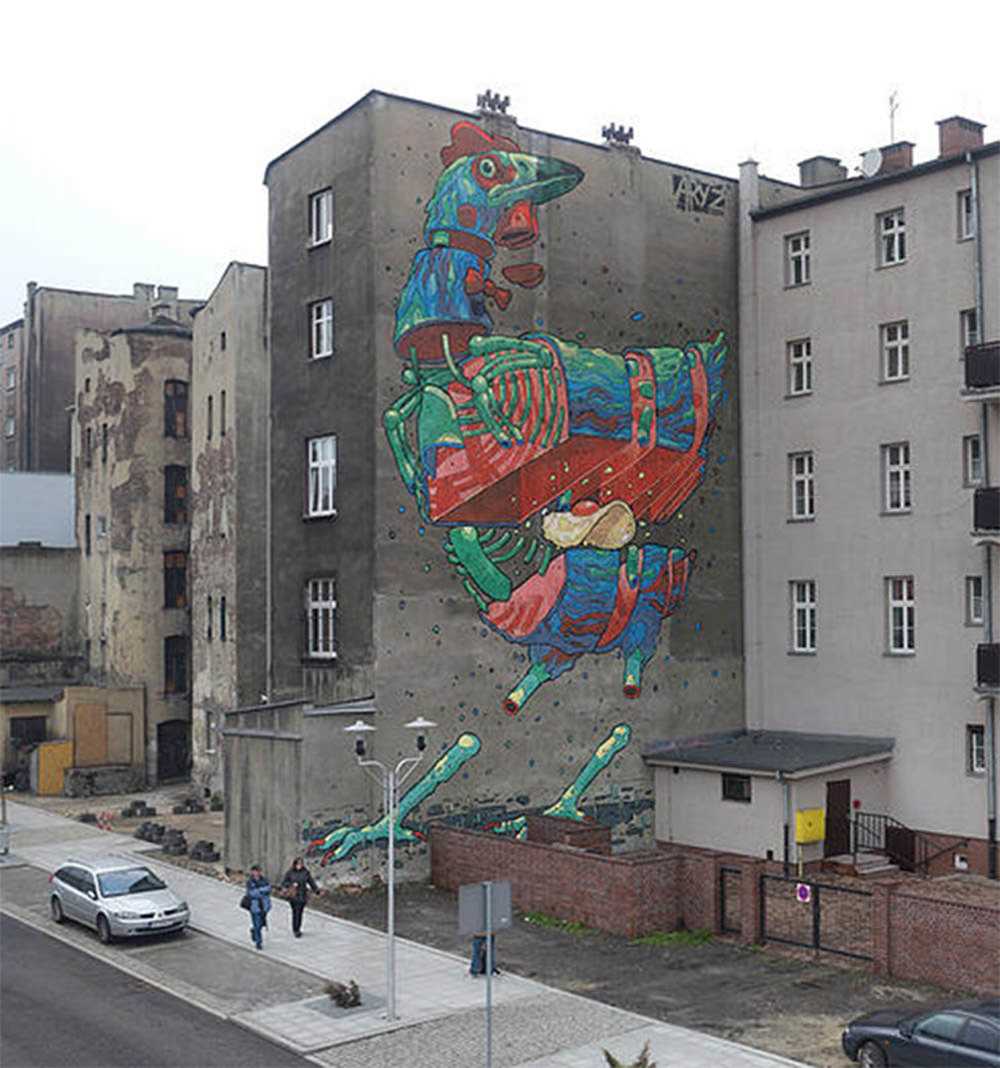
Graffiti is a unique form of artistic expression that allows individuals to communicate their ideas and emotions in a visually striking and public way. Artists use graffiti to challenge societal norms, explore their creativity, and leave their mark on the urban landscape.
Through intricate designs and vibrant colors, graffiti artists transform ordinary walls into captivating works of art that inspire and captivate viewers. Their creations can evoke a wide range of emotions, from awe and wonder to reflection and contemplation.
Activism and Protest
Graffiti has long been used as a form of activism and protest. Artists utilize graffiti to raise awareness about social and political issues, challenge authority, and give a voice to marginalized communities.
Graffiti murals often serve as powerful symbols of resistance and solidarity. They can convey messages of unity, justice, and equality, creating a strong sense of belonging and empowerment among those who identify with the cause.
While some view graffiti as vandalism, it is important to recognize its role as an instrument of change and social commentary. Through graffiti, artists have the ability to start conversations, provoke thought, and bring attention to important issues that may otherwise go unnoticed.
Community Building
Graffiti has the power to bring communities together and forge connections. In many cities, street art festivals and graffiti projects have become catalysts for neighborhood revitalization and community engagement.
Publicly accessible graffiti murals can transform barren walls into vibrant spaces that foster a sense of pride and ownership among residents. They create opportunities for interaction and dialogue, making the city streets more inviting and culturally rich.
Controversies Surrounding Graffiti Art
Graffiti art has always been a subject of controversy, with opinions ranging from admiration to condemnation. Here are some of the main controversies surrounding graffiti art:
- Illegal nature: One of the main controversies surrounding graffiti art is its illegal nature. Many graffiti artists create their artworks without permission on public or private property, leading to vandalism charges. While some argue that graffiti is a form of expression that should be protected, others believe that it is a criminal act that defaces buildings and infrastructure.
- Aesthetic value: Another controversy revolves around the aesthetic value of graffiti art. Some people see it as a beautiful form of urban art and appreciate the creativity and skill involved. On the other hand, there are those who consider it to be mere vandalism that degrades the appearance of cities and neighborhoods.
- Social impact: Graffiti art also raises questions about its social impact. Supporters argue that it gives a voice to marginalized groups and serves as a form of protest against societal issues. However, critics argue that it can contribute to a sense of lawlessness and lead to the perception of urban decay.
- Ownership and preservation: The issue of ownership and preservation is another controversy surrounding graffiti art. Some argue that street art, including graffiti, should be protected and preserved as cultural heritage. Others believe that it is ephemeral art that should be transient and not protected or preserved.
- Gentrification: Graffiti art is often associated with urban areas, and its presence can play a role in gentrification. Some argue that graffiti art adds vibrancy and character to neighborhoods, while others believe that it can be a signifier of an area’s neglect and impending gentrification.
Legal vs. Illegal: Street Art and its Place in Society
Street art has become an integral part of urban culture, with its vibrant and eye-catching displays transforming city landscapes around the world. However, the question of its legality remains a constant debate. While some argue that street art should be viewed as a form of artistic expression and granted legal status, others believe that it represents an act of vandalism and should be strictly prohibited.
Those in favor of legalizing street art argue that it serves as a powerful medium for marginalized voices to be heard. Through their colorful and thought-provoking creations, artists can challenge societal norms, raise awareness on important issues, and ignite conversations within communities. Legalizing street art would provide these artists with a platform to express themselves freely, without the fear of legal repercussions.
On the other hand, opponents argue that street art can be a nuisance and detract from the cleanliness and orderliness of public spaces. They argue that it can lead to increased crime rates and detract from property values. Additionally, some argue that the illegal nature of street art creates an element of excitement and intrigue, adding to its appeal as a countercultural movement.
Furthermore, the question of ownership arises when discussing the legality of street art. While some street art is commissioned or created with permission, much of it is not. This raises complex legal questions about who has the right to utilize public spaces for artistic expression. Is it the property owner or the artist themselves? Should there be designated areas for street art or should it be allowed anywhere?
Overall, the legality of street art remains a contentious issue in society. While many argue for its legalization as a form of artistic expression, others maintain that it should be considered an act of vandalism. As cities continue to grapple with this debate, it is crucial to find a balance that respects both artistic freedom and the maintenance of public spaces.
Murals and Large-Scale Graffiti Art
Murals and large-scale graffiti art have become increasingly popular in urban environments. These eye-catching works of art can often be found adorning the sides of buildings, bridges, and other structures, transforming ordinary spaces into vibrant and dynamic canvases.
One of the advantages of murals and large-scale graffiti art is their ability to capture the attention of passersby. These larger-than-life works of art demand attention and can create a sense of awe and wonder. Whether it’s a detailed portrait, an abstract design, or a thought-provoking message, these pieces have the power to leave a lasting impression on those who view them.
The Process of Creating Murals and Large-Scale Graffiti Art
Creating a mural or large-scale graffiti art piece requires careful planning and execution. Artists often work closely with property owners or local authorities to obtain permission and ensure their artwork aligns with the overall aesthetic of the area. The process can involve multiple stages, including the initial brainstorming, sketching, and refining the design, and finally, executing the artwork on the chosen surface.
Artists may use a variety of tools and materials to create their murals, including spray paint, stencils, brushes, and rollers. The scale of the artwork often requires the use of scaffolding or lifts to reach the higher sections of the canvas. This process can be physically demanding and time-consuming, but the end result is a breathtaking piece of art that can transform the entire atmosphere of a space.
The Impact of Murals and Large-Scale Graffiti Art
Murals and large-scale graffiti art have the power to enhance the visual appeal of urban environments and contribute to the cultural identity of a city. These artworks can sometimes reflect the local history, culture, or social issues, serving as a platform for artists to express their creativity and make a statement.
Moreover, murals and large-scale graffiti art have the potential to inspire and engage the community. They can spark conversations, encourage exploration, and foster a sense of pride in the local area. These works of art often become landmarks and tourist attractions, drawing people from all over to admire and appreciate the creativity and talent of the artists.
Preservation and Conservation of Graffiti Art
Graffiti art is a reflection of urban culture and serves as a form of self-expression for many artists. However, due to its unconventional canvas and materials, graffiti art is often subject to degradation and vandalism. As a result, preserving and conserving graffiti art has become increasingly important in order to protect and document this unique form of artistic expression.
Preservation of graffiti art involves several steps to ensure its longevity. One crucial aspect is the careful selection of materials and techniques used during the creation process. Using high-quality, weather-resistant paints and coatings can help protect the art from environmental damage and fading.
Another key consideration is the location of graffiti art. By choosing suitable surfaces that are less exposed to weather conditions or potential vandalism, the risk of damage to the artwork can be minimized. Additionally, implementing protective barriers, such as clear acrylic sheets or anti-graffiti coatings, can help prevent unwanted alteration or removal of the art.
Conservation efforts for graffiti art are equally important in order to preserve its original state. This involves regular maintenance and cleaning to remove dirt, pollutants, and graffiti tags that may deface the artwork. Specially formulated cleaning agents and techniques should be used to ensure that the cleaning process does not damage or alter the original artwork.
To further protect and document graffiti art, digital preservation methods can be employed. This involves capturing high-quality photographs or videos of the artwork to create a digital archive. This not only preserves the art itself but also serves as historical documentation of graffiti culture and its evolution.
Preservation and conservation of graffiti art is a collaborative effort that requires the involvement of artists, communities, and local authorities. By recognizing the value and cultural significance of this art form, steps can be taken to ensure its long-term existence and appreciation.
| Preservation Techniques | Conservation Strategies |
|---|---|
| Use of high-quality paints and coatings | Regular maintenance and cleaning |
| Choosing suitable surfaces and protective barriers | Removal of dirt, pollutants, and graffiti tags |
| Implementing anti-graffiti coatings | Digital preservation through photography and videos |
Future of Graffiti Art: Innovation and Integration
Graffiti art has always been at the forefront of urban creativity and self-expression. Over the years, it has evolved from simple tags and street art to a recognized and respected art form. As we look to the future, we can expect graffiti art to continue to push boundaries and innovate.
Integration with Technology
One of the most exciting aspects of the future of graffiti art is the integration of technology. Artists are now using tools like virtual reality and augmented reality to enhance their creations. With the advancements in technology, graffiti artists have the opportunity to bring their artwork to life in ways we’ve never seen before.
Exploration of New Materials
The future of graffiti art will also see artists exploring new materials to create their masterpieces. From eco-friendly paint alternatives to 3D printing, artists are embracing innovative materials and techniques. By experimenting with unconventional materials, graffiti artists can create visually stunning pieces that challenge the boundaries of traditional art.
Additionally, graffiti artists are increasingly experimenting with different surfaces to create their work. From abandoned buildings to sidewalks and even clothing, the possibilities are endless. This blending of art and everyday life allows for greater accessibility and exposure to graffiti art.
Collaboration and Community
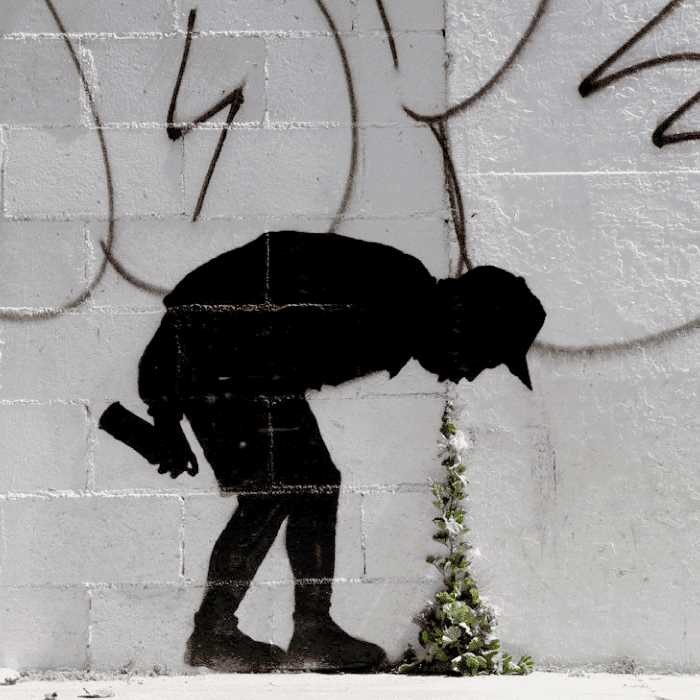
In the future, graffiti art will continue to foster a sense of community and collaboration. Graffiti festivals and events bring artists together to share their skills and inspire one another. These collaborations not only result in incredible works of art but also help to uplift the entire graffiti art community.
Furthermore, graffiti artists are often collaborating with other creatives, such as musicians and dancers, to create immersive art experiences. This integration of different art forms allows for a more dynamic and engaging audience experience, bringing graffiti art to a wider audience.
The future of graffiti art is bright and full of possibilities. With the integration of technology, exploration of new materials, and a focus on collaboration and community, graffiti art will continue to captivate and inspire urban spaces for years to come.

I am a mural enthusiast and a fervent admirer of street art. Rather than creating murals myself, I am passionate about collecting them. My love for street art knows no bounds. I am dedicated to curating and cherishing these artworks that grace the streets. My collection stands as a testament to my profound appreciation for this form of artistic expression.
read about me



